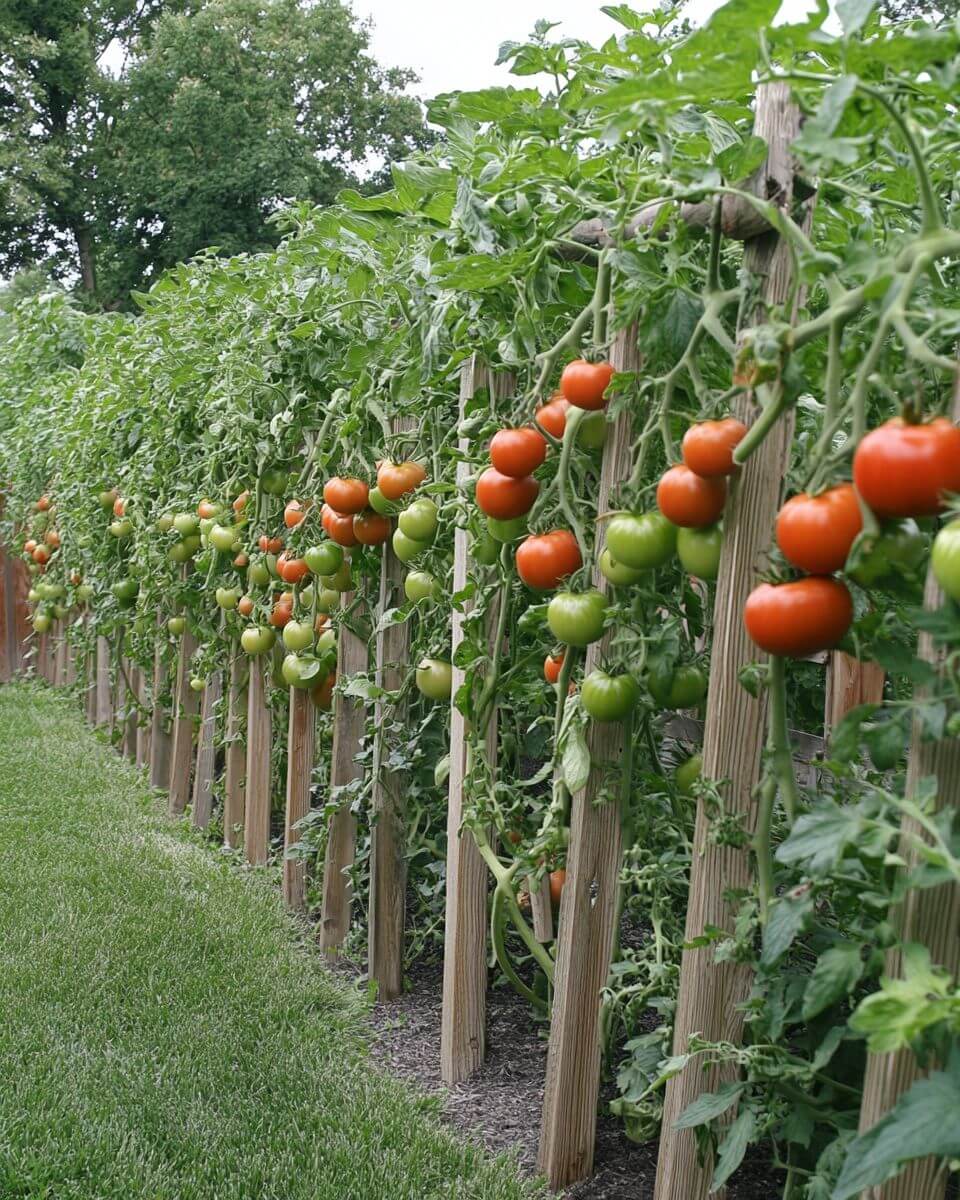Tomatoes are a favorite among gardeners due to their rich flavor and versatility in cooking. However, growing healthy tomato plants requires more than just planting seeds and watering them. One often-overlooked aspect of successful tomato gardening is providing proper support. A well-constructed trellis not only helps manage plant growth but also increases yield and reduces the risk of disease. This guide will highlight common mistakes when setting up a trellis and provide step-by-step instructions for building a sturdy support system for your tomato plants.
Common Mistakes in Tomato Trellis Construction
Many gardeners unintentionally compromise their tomato plants by using weak or poorly designed trellises. Some common errors include:
- Choosing flimsy stakes that fail to support the weight of mature plants.
- Positioning trellises too close together, restricting airflow and growth.
- Ignoring the natural growth pattern of tomato plants.
- Failing to secure the trellis properly in the ground, leading to instability.
These mistakes can result in damaged plants, lower fruit yields, and a greater risk of pests and diseases.
Why Proper Trellising is Essential
Providing proper support for tomato plants offers several benefits:
- Keeps plants upright, preventing fruit from touching the soil where it is prone to rot and pest damage.
- Improves air circulation around the plant, reducing the likelihood of fungal infections.
- Allows the plant to direct its energy toward fruit production rather than struggling to stay upright.
- Makes harvesting easier by keeping fruits accessible and reducing clutter in the garden.
Materials Needed for a Sturdy Tomato Trellis
To construct a durable tomato trellis, gather the following supplies:
- Strong wooden or metal stakes for support.
- Heavy-duty twine, wire, or garden netting.
- A hammer or mallet for securing stakes.
- Measuring tape to ensure proper spacing.
- For a more permanent structure, metal T-posts and cattle panels can provide additional strength and longevity.
Step-by-Step Guide to Building a Tomato Trellis
- Select the Best Location – Choose a sunny spot with ample space for your tomato plants.
- Mark the Placement – Measure and mark where you’ll place the stakes, keeping at least 3 feet of space between them for proper plant growth.
- Secure the Stakes – Drive each stake at least 1 foot into the ground to ensure stability.
- Attach the Support Structure – If using cattle panels, secure them to the stakes. If using twine or wire, run it horizontally between the stakes at 12-18 inch intervals from the ground up.
- Tie Plants to the Trellis – As your tomato plants grow, gently secure the main stems to the trellis using soft ties or garden clips. Be careful not to tie them too tightly, as this could damage the stems.
Maintaining Your Tomato Trellis
Regular upkeep is crucial to keeping your trellis effective throughout the growing season.
- Inspect the trellis weekly to ensure all ties remain secure and the structure is stable.
- Continue tying new growth to the trellis as plants develop to prevent sagging.
- Check for signs of disease or pests and take necessary action immediately.
- At the end of the season, clean and store trellis materials properly to prolong their lifespan.
Final Thoughts
A well-built tomato trellis can significantly improve the health and productivity of your plants. By avoiding common mistakes and following a structured approach, you can create a support system that maximizes growth and fruit yield. With the right materials and proper maintenance, your trellis will remain a reliable tool for many seasons, helping you enjoy a steady supply of fresh, homegrown tomatoes.
